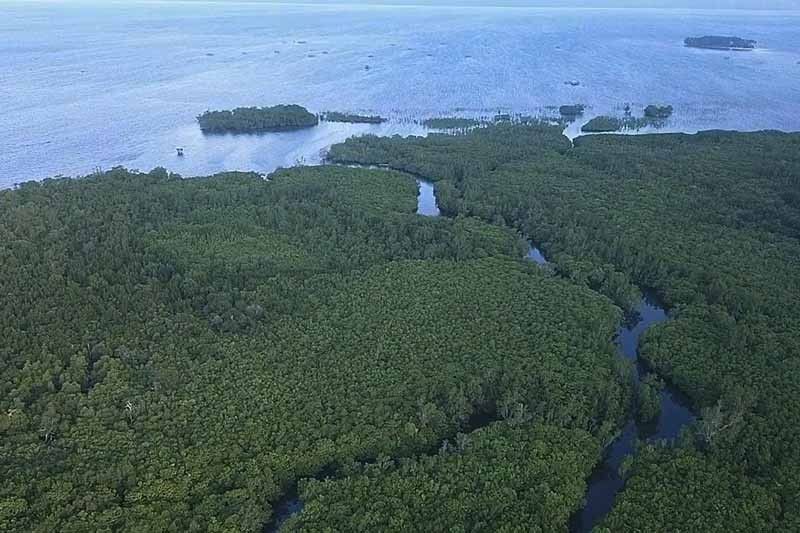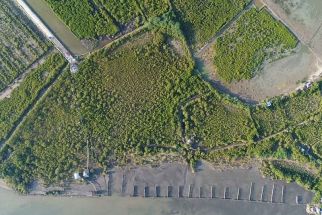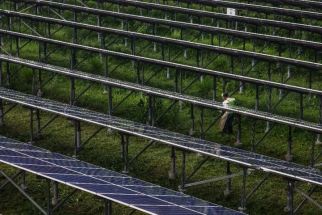Mangrove restoration should include social aspects, involve community — study

MANILA, Philippines — Studies on mangrove restoration need to be more inclusive and also include the social attributes of this important ecosystem to improve how conservation is done across Southeast Asia, scientists from the University of the Philippines said.
A study published by by UP Diliman Institute of Biology Associate Professor Dr. Severino Salmo III and biology graduate student Maria Elisa Gerona-Daga and published in Frontiers and Marine Science found that most publications on mangrove restoration assessed ecological attributes, around three times more than those that linked restoration to social aspects
Most of the studies that assessed social attributes were focused on the economic value of mangrove ecosystems and their services (24%), on the role of different sectors in mangrove restoration and management (23%), and on policies and governance (20%).
Community-based restoration (15%), eco-cultural practices (14%), and environmental education (5%) were relatively less studied.
Island biogeography graduate student Mark Angelo Bucay said the paper's findings show the lack of focus on integrative, multidisciplinary studies.
"While it is ‘a must’ for scientific studies to be published in peer-reviewed studies, scientific articles on community-based experiences, social attributes like community lessons from restoration success (and failure), economic profiling and ethno-botanical reviews remain lagging," Bucay told Philstar.com.
"Viewing human community dynamics as part of the total mangrove ecosystem science has not been the case for decades," he added.
According to Bucay, more collaboration between natural and social scientists will encourage more research on the social components of mangrove restoration.
Appreciating social dimensions increases value of mangroves
The study of Gerona-Daga and Salmo stressed that the integration of social dimensions in ecological restoration of mangroves can increase the ecosystem’s socio-cultural value.
This can also lead to more scientific output through community engagement or through "citizen science", which includes mapping mangroves with local community partners and local knowledge and practices.
"Future restoration strategies may benefit to focus on citizen science, and include social attributes, in addition to the usual focus of ecological attributes in mangrove restoration," the study read.
Mangroves in Southeast Asia
Southeast Asia accounts for nearly a third of the world’s mangrove extent and has the greatest diversity of mangrove species. Unfortunately, the region also suffers extensive mangrove losses, which result in biodiversity loss and the reduction of ecosystem services — the value that healthy ecosystems give to humans.
Myanmar is Southeast Asia’s mangrove loss hotspot, suffering a 27.6% decline between 2000 and 2014, according to a survey of 355 mangrove restoration research by Salmo and Gerona-Daga.
The study also found that the Philippines has the second worst mangrove decline in the region, with the country losing 10.5% of its mangrove forests between 1990 and 2010. The rapid expansion of aquaculture ponds for fish is the main driver of mangrove loss in the Philippines.
According to the Department of Environment and Natural Resources, the Philippines had 303,373 hectares of mangrove forests in 2015, down from an estimated 450,000 hectares in 1918.
Mangroves provide a range of ecosystem services, including coastline protection, carbon storage and sequestration, and provision of habitats for various species. Mangroves also support the livelihood of coastal communities.
What should mangrove restoration research focus on?
Gerona-Daga and Salmo proposed five priority research topics that will enhance the outcomes of mangrove restoration studies in Southeast Asia:
- Restoration areas and methods
- Mangrove restoration in climate change adaptation and mitigation programs
- Monitoring recoveries of biodiversity and ecosystem services
- Policies, governance, and community engagement
- Strengthening of regional collaboration
The researchers acknowledge the topics are "biased for biodiversity and ecosystem services," noting these will highlight Southeast Asia's contribution towards realizing the targets for the United Nations Decade on Ecosystem Restoration in 2030. This aims to prevent, halt, and reverse the degradation of ecosystems across the globe.
They also suggested including more mangrove faunal and floral species that would serve as bases for selecting and prioritizing sites for restoration, and the need to design restoration projects to adapt to and mitigate climate change impacts.
They also said that correlating vegetation metrics — using plant growth to assess the health of an ecosystem — with ecosystem services would also help assess how effective a restoration program is.
"Our study aims to provide suggestions in line with international commitments of ASEAN-member countries. The pressing need is to establish and consistently monitor the state of the mangroves for each country, protect mangroves through biodiversity conservation programs, and more importantly, to stop or limit coastal reclamation projects," Salmo said.
In the Philippines, reclamation projects disturb ecosystems such as mangroves and seagrasses, and threaten the livelihood of coastal communities.
There are 187 reclamation projects across the archipelago, according to a Philippine Reclamation Authority master list of approved, pending, and ongoing dump-and-fill ventures.
At least 30 projects are in Manila Bay, while 19 projects are recorded in Negros Occidental, 15 in Panay island, 19 in Cebu and Bohol and 25 in Eastern Visayas. The list does not include the Bulacan aerotropolis and the Dumaguete reclamation projects.
Future of mangrove conservation
Proposed measures seeking to establish a national greenbelt program to protect coastal communities from the worsening impacts of climate change remain pending at the committee level in the Senate and the House of Representatives.
Coastal greenbelt zones are composed of mangroves and beach forest areas.
"We live in an archipelago with one of the longest coastlines that are also the pathways of typhoons and storm surges, yet the government favored the so-called development projects in exchange for coastal defense provided by mangroves and beach forest areas which had been decimated as a result of reclamation and dump-and-fill projects," said Gloria Estenzo-Ramos, vice president of Oceana Philippines.
For Mangrove Matters PH founder Matthew Vincent Tabilog, the future of mangrove research and conservation in the country is bright if there is inclusivity in mangrove research.
"Allowing citizen science as a pilot program for the locals can be a good start for them to contribute to mangrove studies," Tabilog said. He added that grassroots conservation measures that can be learned from coastal communities should be integrated in studies.
Bucay also stressed that the Philippines cannot be a leader in mangrove research and conservation if there is no systemic support given to mangrove science.
"Scientists and advocates can do their job on research, instructions and extensions, but these are all limited if institutional safeguards on mangrove conservation aren’t in place," Bucay said.
"Environmental laws and implementations should be science- and people-based if we want our mangroves to thrive."
-- This story was supported by Climate Tracker Asia and Earth Journalism Network
- Latest


























